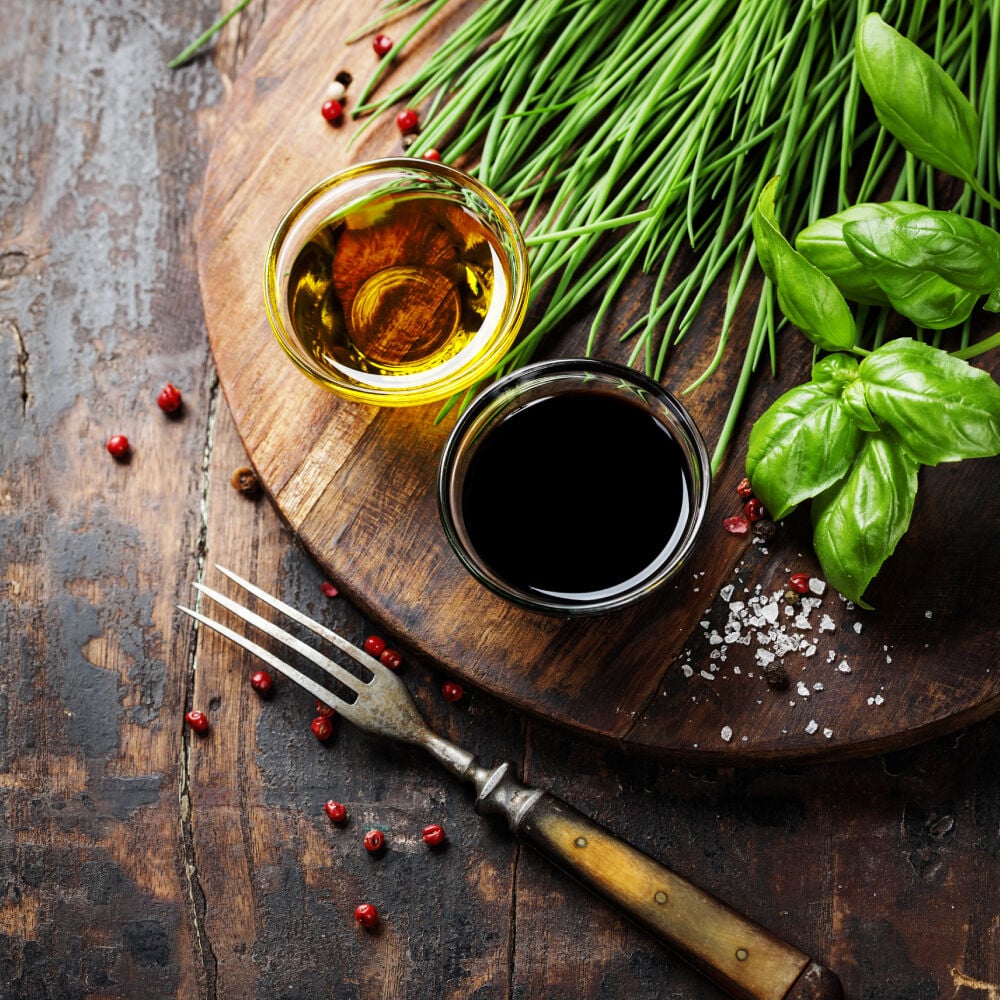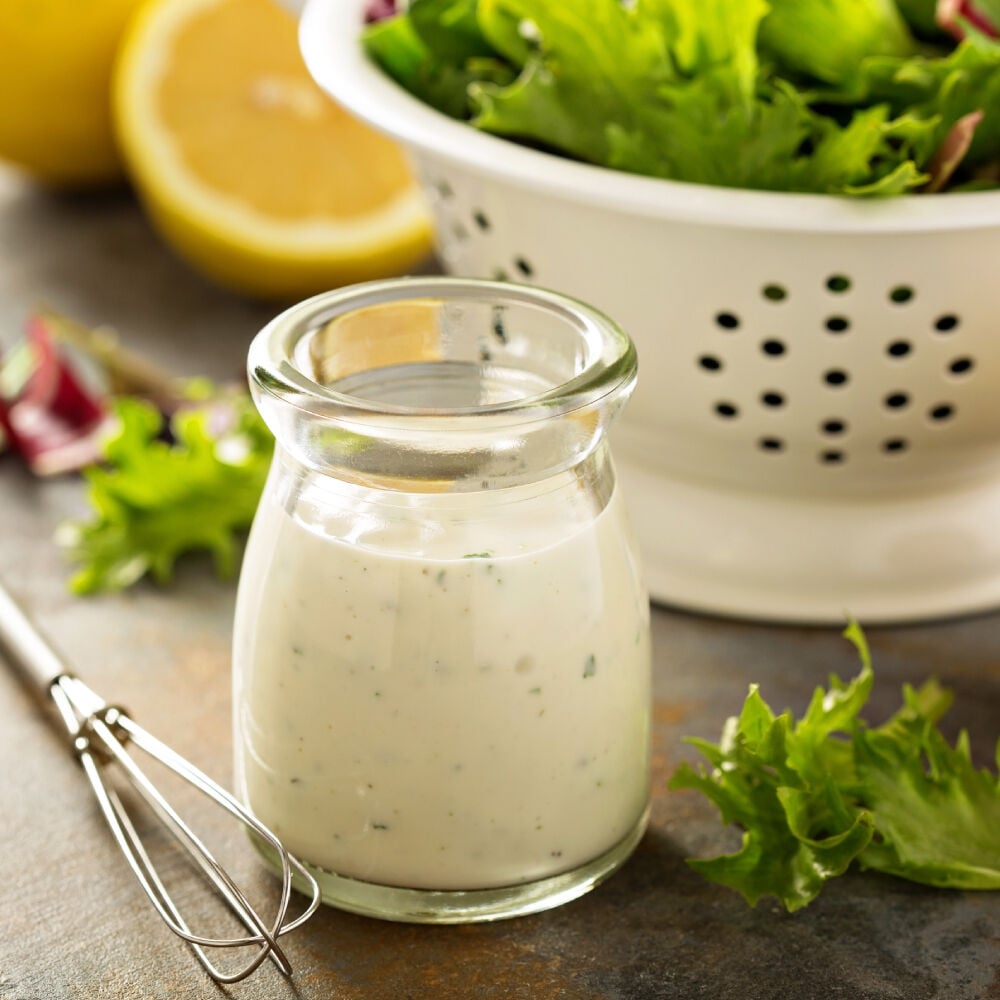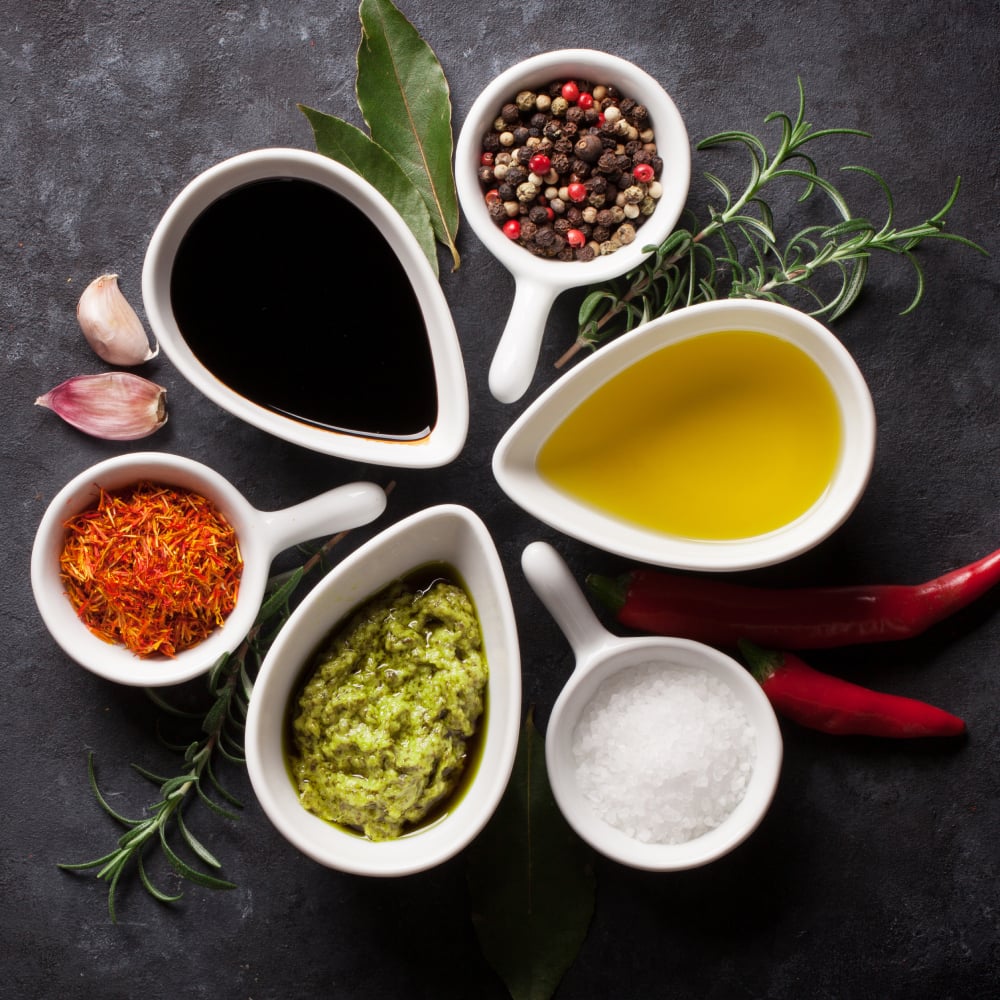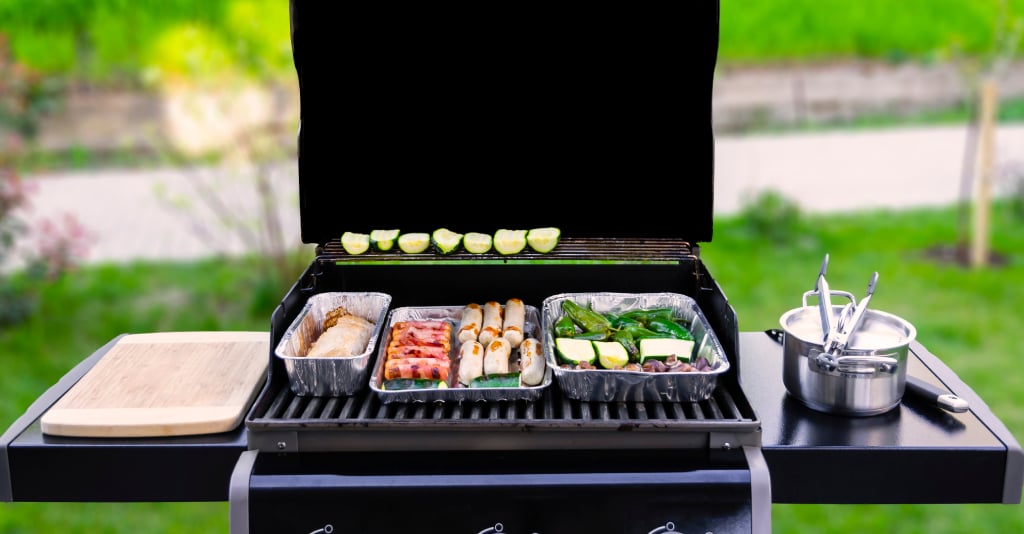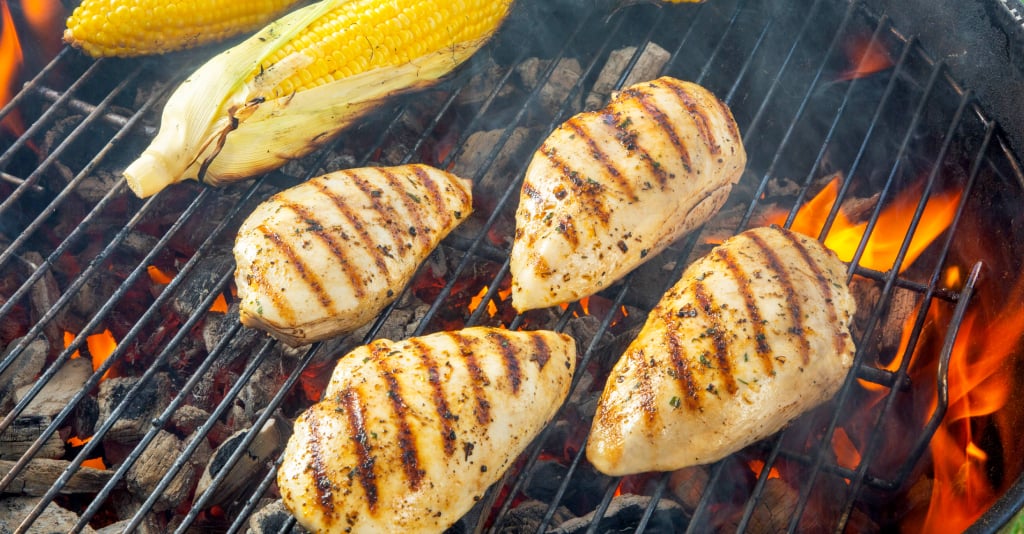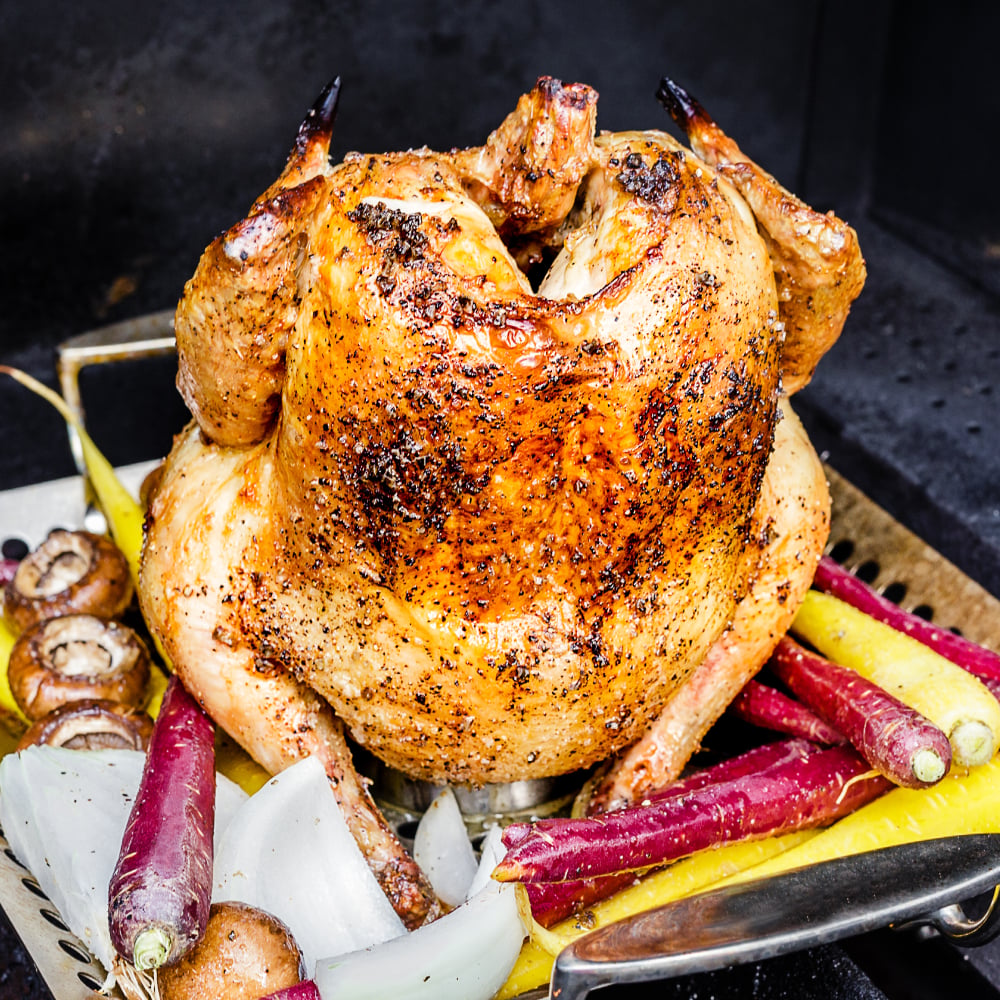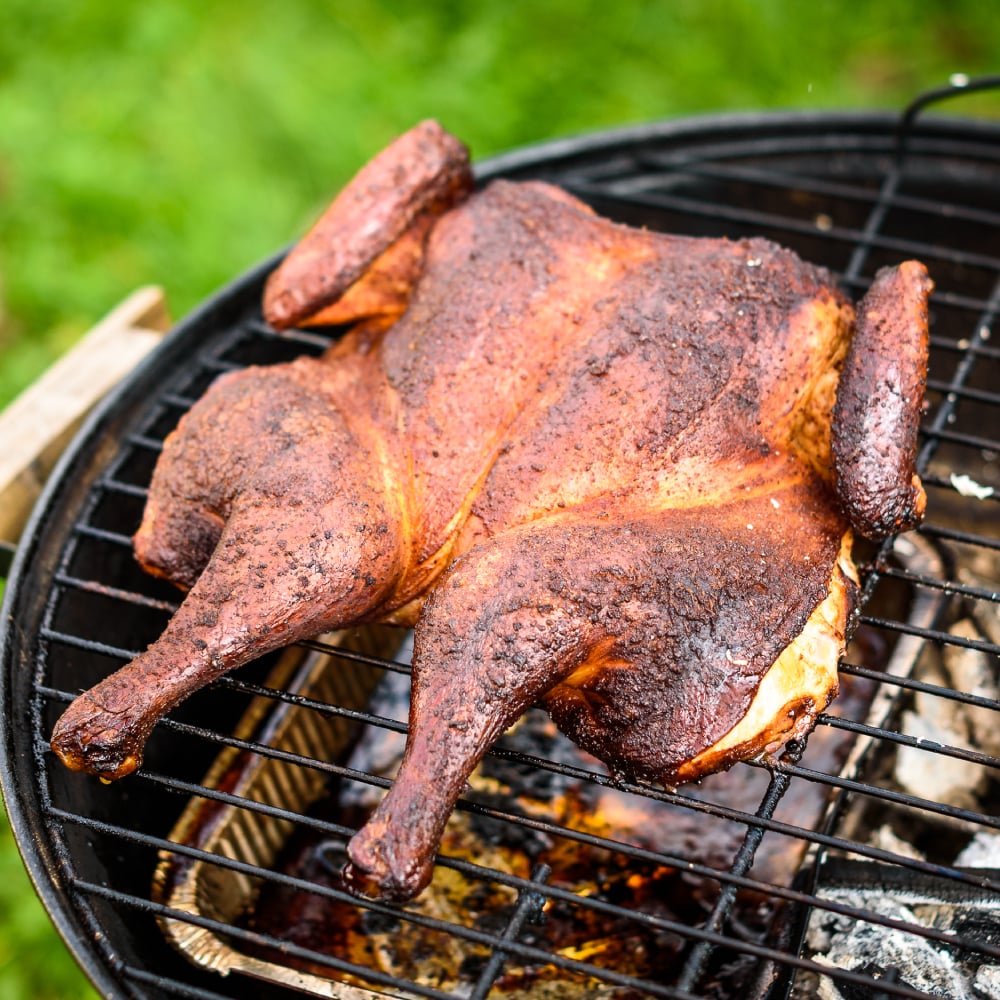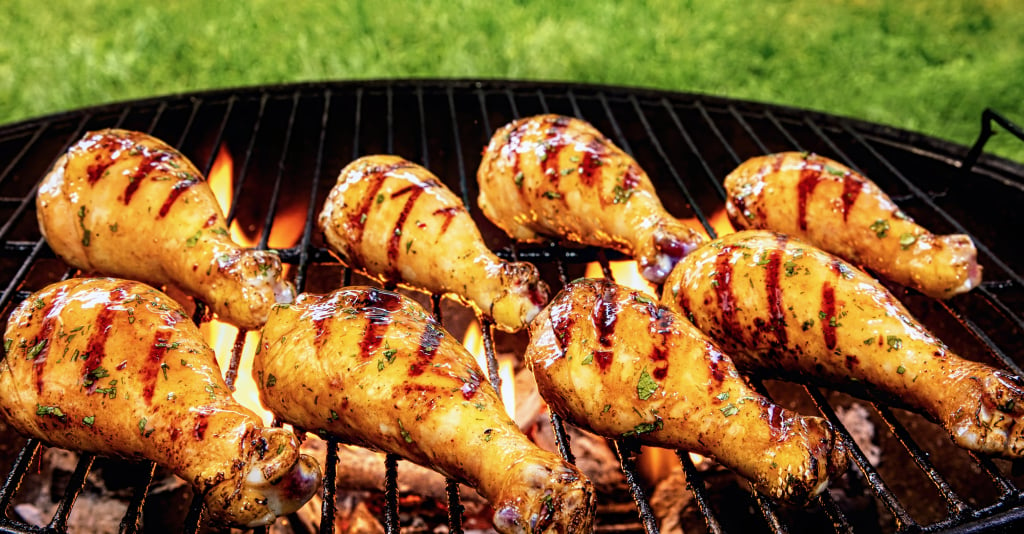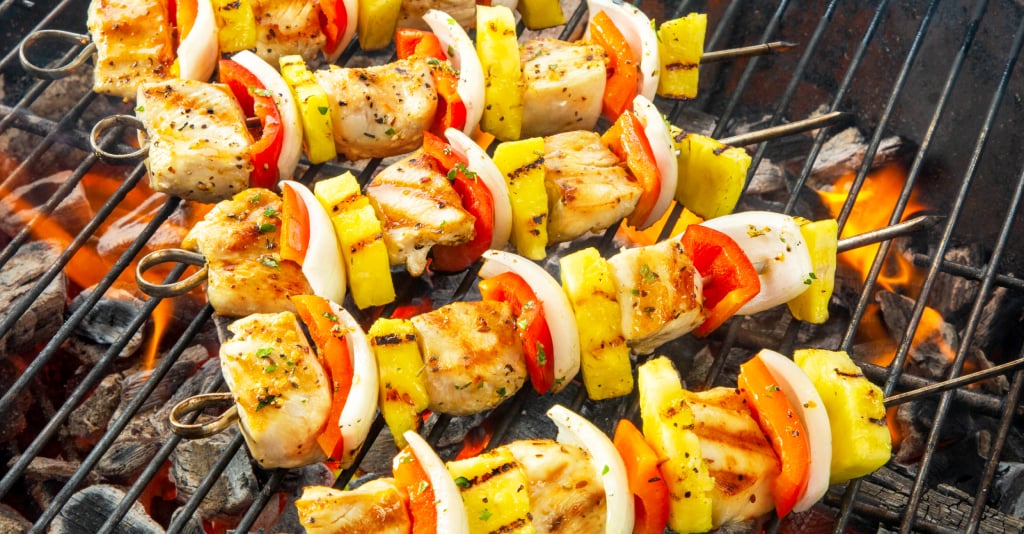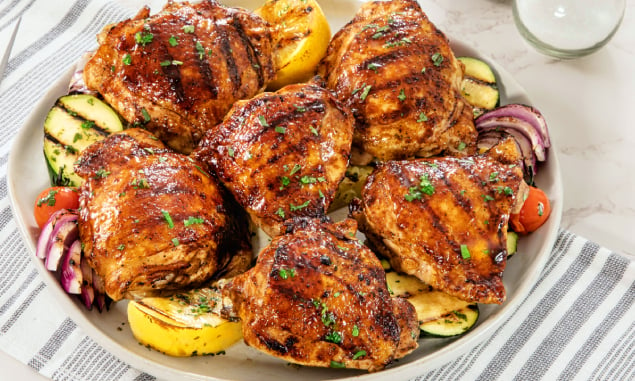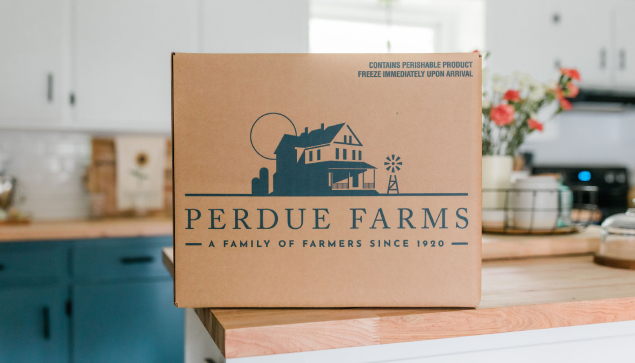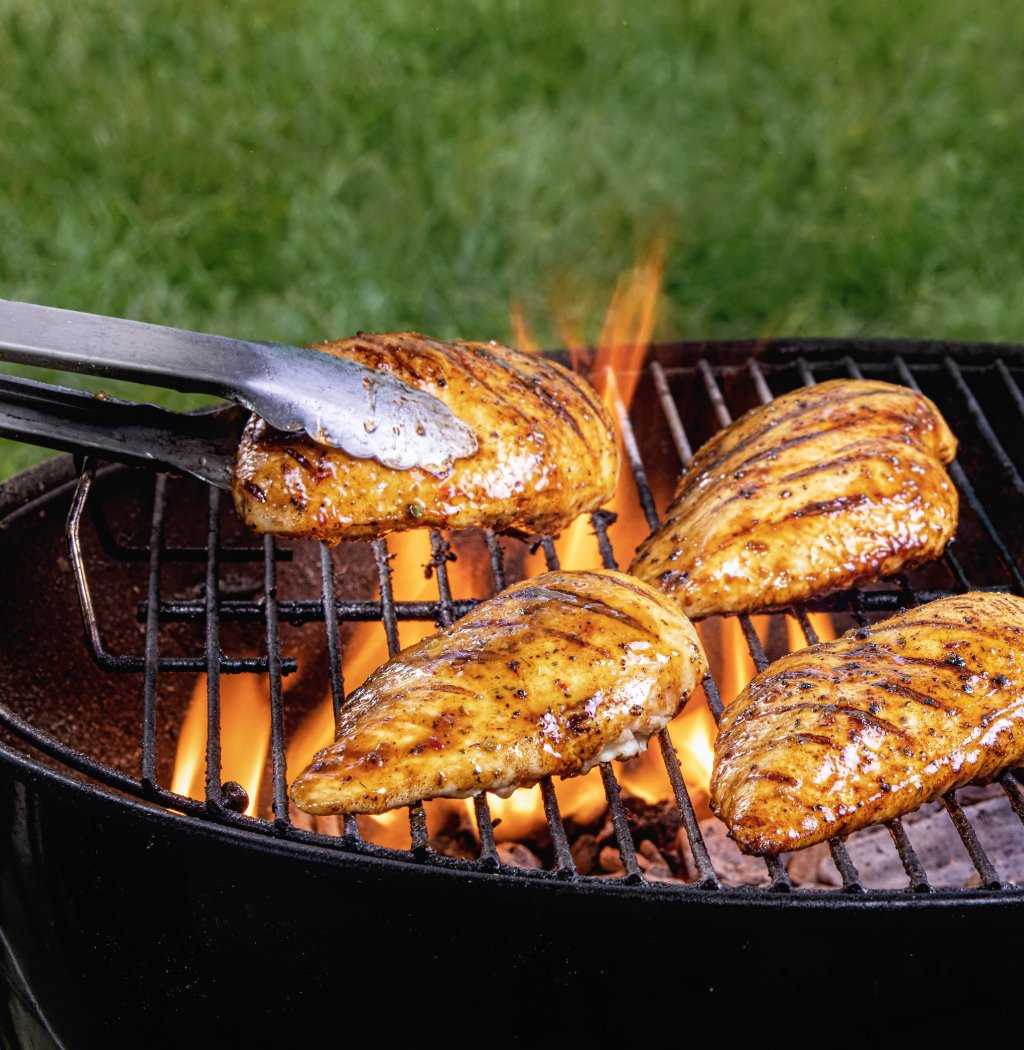
GRILLING CHICKEN ON A GAS GRILL
Whether you need a refresher or a full-on tutorial, this chicken grilling primer will help you hone your technique. Perdue Farms’ Executive Chef Chris Moyer, CEC,CRC, walks you step by step through the grilling process, from properly seasoning your gas grill and marinating chicken for grilling to cooking up moist, juicy and delicious chicken breasts, thighs, wings and drumsticks every time. Note: Instructions for gas grills.
Seasoning lends flavor as well as helps retain moisture as the chicken cooks. Here’s a good rule of thumb: Marinate chicken for two to four hours per inch of thickness. For larger, more dense pieces, consider marinating overnight. Note: For an overnight process, avoid high-acid solutions, as they may toughen thinner sections of chicken. Give these delicious chicken marinade recipes a try:
Grilling the tastiest, tender chicken begins well before you place product on the grill. The secret to perfectly grilled chicken starts with grill prep. Follow these steps:
- Preheat and clean the grill: Turn the grill on high heat, close the lid and let set for approximately 8 to 10 minutes. Preheating the grill allows the grates to heat through and burns off stuck-on particles. Once preheated, lift the grill lid, and using a grill brush, scrape grates clean. Close lid and allow the grill to heat back up.
- Season the grates: Fill a small bowl with olive or vegetable oil. Dip a clean kitchen rag in oil, being sure not to oversaturate, and, using a pair of extra-long stainless steel tongs, run rag along grates.
- Monitor temperature: Using both the grill’s built-in lid thermometer and an oven thermometer placed inside the unit, keep tabs on the grill temperature, ensuring that readings are identical.
- Establish direct and indirect cooking areas: Adjust the flame of each burner to create areas of high heat (where protein can quickly sear) and low-to-no heat (where protein can slowly cook).
- Organize tools and grilling utensils: While the grill is heating, take time to assemble necessary cooking tools, accessories and serveware, paper towels, plastic wrap or aluminum foil and any necessary basting sauces, salt and pepper and seasonings. Note: Choose a high-quality digital meat thermometer, which unlike analog models, does not require calibration or produce false readings.
A classic main course at any backyard barbecue! The secret to moist and juicy chicken breasts is searing first, cooking second. To season chicken: For thin breasts or meat marinated in a high-acid solution, let set for 30 minutes to an hour. If breasts are 1 to 1 1/2 inches or thicker, let set for 2 to 4 hours.
How to Grill Chicken Breast on Gas Grill
- Preheat grill to 500 to 545 F. Grates should be searing hot.
- To create checkerboard grill marks: Place chicken breasts, top or “show side” down, on the grill at a slight angle to the grates. After 1 to 2 minutes, lift up one end of breast to check grill marks. When ready, lift chicken breasts off grill and place back on grates, top side down, in the opposite direction of grill marks.
- To cook chicken through: Turn the grill temperature down and move breasts, show side up, to the indirect heat zone. Close the lid. Monitor the grill thermometer to ensure that the grill stays at a constant 350 to 375 F. Half way through the cooking process, lift breasts off the grill and place back down in the opposite direction of grill marks on the underside. Open the grill lid and with a meat thermometer check the temperature of chicken every 8 to 10 minutes until done.
Internal Temperature for Grilled Chicken: A meat thermometer, inserted into the thickest portion of chicken, should register 170 F when chicken breasts are cooked through.
Note: Chicken breasts can be grilled with the lid open; doing so may extend cooking time and lessen the appearance of grill marks.
We can’t think of any better way to celebrate a lazy summer Sunday! Cooking a whole chicken on the grill takes time, patience and a willingness to closely monitor both the temperature of the grill and the chicken meat. Give these whole chicken recipes a try:
Skin-on, bone-in chicken cuts are best when slowly cooked on the grill, then quickly seared before serving.
- Season chicken with marinade of choice, following directions listed above and being sure to season under the skin. Note: It’s difficult for marinade to penetrate chicken wings. Consider grilling as is and once wings are fully cooked, tossing in a sauce.
- Turn the grill on medium heat. Close the lid and preheat until the grill registers 350 to 375 F.
- Pat chicken pieces dry. Place, bone side down, on the grill. Follow instructions for Spatchcock chicken.
- Note: Dark meat is higher in fat than chicken breast meat. If cooked too quickly, the fibers of the meat will tighten and push natural juices or some of the marinade out. Cooking dark meat slowly will lessen constriction, retain moisture and result in tender meat.
- For bone-in chicken, grill until a meat thermometer registers at least 180 to 185 F, which allows the marrow to cook through and meat juices to run clear.
Q. How long does it take to grill chicken?
A. Always cook by temperature not by time. The size of breasts, wings, thighs and drumsticks varies from bird to bird. Rely on a digital meat thermometer to check the internal temperature. Bone-in products should be cooked to an internal temperature of 180 to 185 F. Boneless, skinless breasts should be cooked to an internal temperature of 170 F.
Q. Can you bake chicken breasts in the oven and finish on the grill?
A. To do so, you would follow directions for reverse caramelization. Cook chicken in the oven as you usually would. When chicken is 75 to 85% cooked through, finish on a searing hot grill (500 to 575 F) to achieve grill marks. Cooking chicken in the oven before grilling offers an advantage in that the oven will dry out the skin so that when pieces are placed on the grill, they won’t stick. If chicken is cooked in a sauce or other liquid, be sure to pat pieces dry before you place them on the grill.
Q. How do you keep grilled chicken moist?
A. Don’t cook too quickly – be patient. If the grill is too hot, meat will tighten, which pushes marinade and natural juices out. Temperature that is too high is the No. 1 reason why chicken dries out. Searing the product first helps to keep moisture inside. Once seared, lower the temperature of the grill (to as low as 350 F) and cook slowly.
Q. Can you grill frozen chicken?
A. It’s not preferable. Here’s why it’s a bad idea: The ice crystals in the fibers of the chicken will melt and cause the product to stick on the grates. Plus, it will take longer than thawed chicken to cook. There’s also the issue of doneness. To fully cook the frozen center, the outside of the chicken may overcook and burn.
Q. Is grilled chicken healthy?
A. Grilling is one of the healthiest cooking methods: no added oils, breading or calorie-laden toppings and excess fat drips away during the cooking process. Added bonus: Our boneless chicken breasts have only 130 calories and 3 grams of fat per 4-ounce serving. Talk about lean and delicious!
If you are concerned about polycyclic aromatic hydrocarbons (PAHs) that are produced when meat is cooked over an open flame, consider these techniques:
- Remove excess fat from chicken before grilling
- Grill chicken over indirect heat
- Par cook chicken in the microwave before grilling
- Continuously turn chicken during the grilling process
- Remove charred portions of chicken before serving
Source: National Cancer Institute
Grilled Chicken Dinner Ideas
Hungry for more? Check out these easy grilled chicken recipes from Perdue Farms' culinary team
Better Chicken for Your Backyard BBQ
Chicken from Perdue Farms' family of American farmers is raised to a higher standard: no antibiotics, hormones or steroids ever and plenty of access to sunlight and the great outdoors. We believe farming better translates to better-tasting meat. But don't take our word for it! Stock up on premium chicken bundles for a summer of cookouts — we deliver to your doorstep!
Why Choose Perdue Farms
When it comes to the food you feed your family, quality matters. And while there are a lot of options out there, Perdue Farms stands apart. In business for over 100 years, we are a fourth-generation, family owned American food and agriculture business that from the beginning has worked with family farmers.
